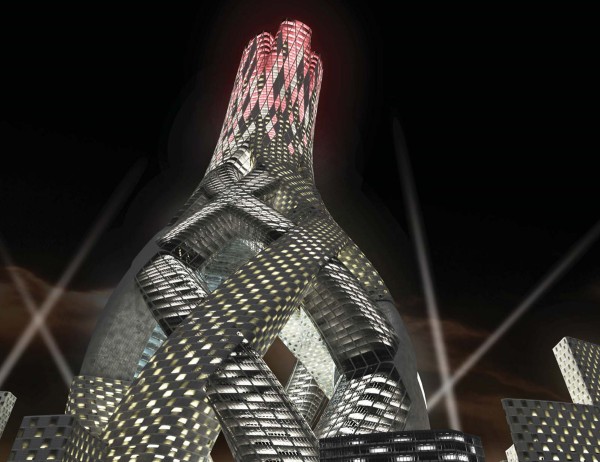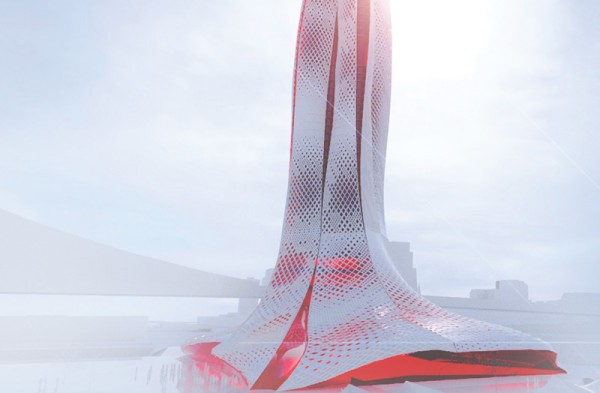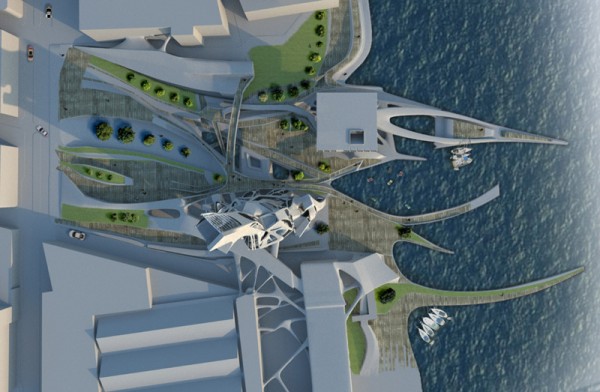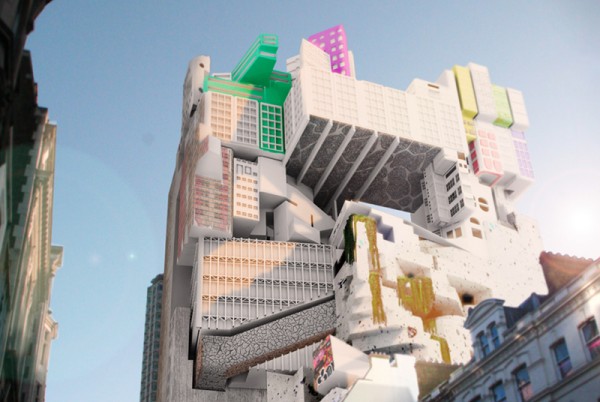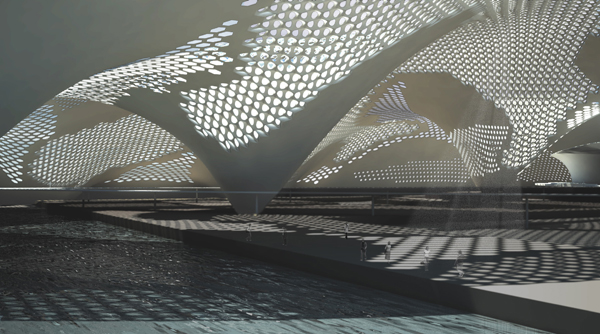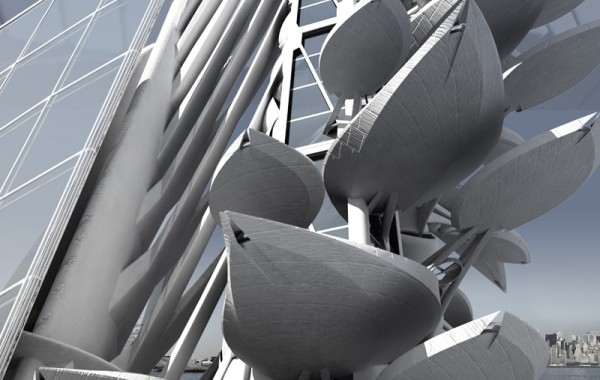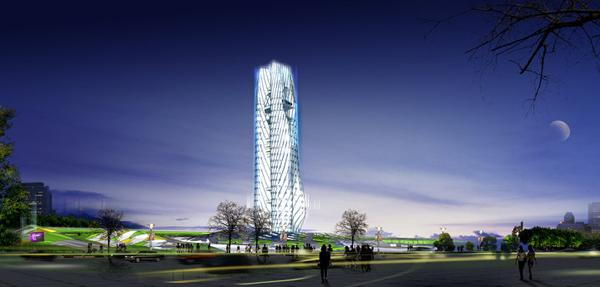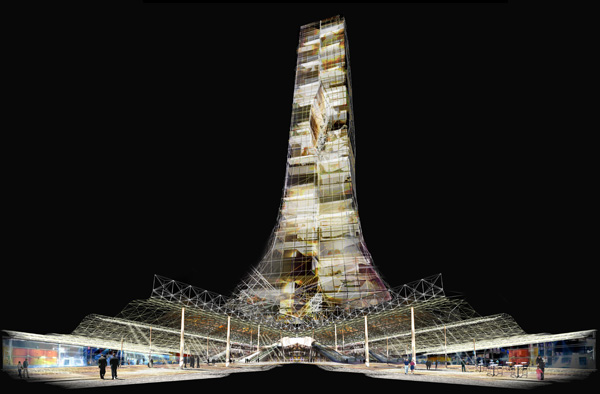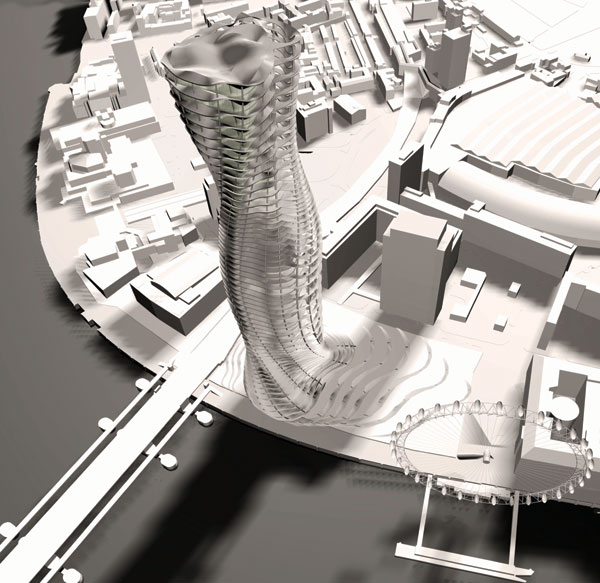Designed by Houston Drum
As we move toward the year 2040, the demands for energy, mobility and space in Los Angeles continue to grow in a region already overwhelmed with urban sprawl, traffic congestion, scarce open space, and inferior public transportation. Excessive autonomy of living situations and transportation are at the root of these problems. The 25-Hour City looks to oppose the Los Angeles urban model of autonomy by creating an urban environment with hyper-density and vibrancy by incorporating everything, everywhere, all the time. The hyper-mixing of program allows for the freedom of continuous work or leisure at anytime of the day or night. This urban configuration is coupled with the programmatic dispersal of commercial, residential, retail, public, and recreational space to fulfill the 25-Hour City concept.
This vertical proposal accomplishes the ultimate level of sustainable responsibility vis-à-vis hyper levels of land-use efficiency. By condensing 75,000 people in one tower, transportation needs are reduced substantially while open space on the ground level is maintained. When dealing with the hyper-dense situation of 80,000 people / km2, parameters of natural light and ventilation become the most prominent influences on zoning and massing throughout the city. Using these parameters of light and air to understand limits in density that can happen at the ground level, the only logical way for a city to grow is vertically. Through the use of this logic, swells in the urban fabric are created that evolve into vertical cities where the limits of density cease to exist. Read the rest of this entry »

